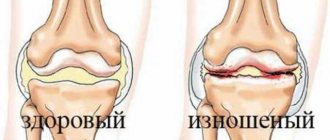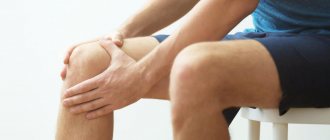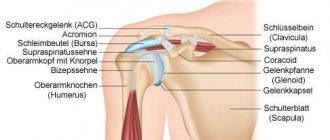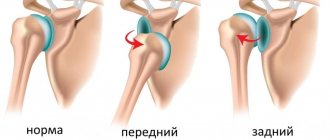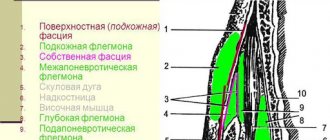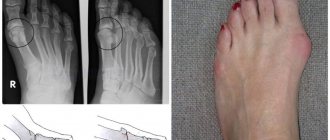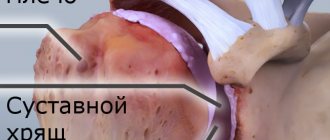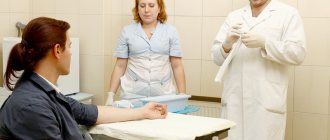- Anesthesia. This point is very important, because if a person feels severe pain, he will not consciously move his hand unless absolutely necessary, and this only develops the pathological process;
- Intra-articular injections of hyaluronic acid provide additional lubrication and nutrition to the articular surfaces.
- Strengthening cartilage tissue, protection and restoration;
- Taking anti-inflammatory drugs to relieve inflammation, which makes the symptoms worse;
- Exercises to restore range of motion partially or fully.
A very important stage of treatment is diet. The patient is advised to exclude salty and spicy foods from the diet. Foods enriched with collagen have an extremely positive effect on the restoration of cartilage: turkey, salmon, shrimp, seaweed, fresh herbs.
In addition to the above treatment methods, it is also recommended to resort to medical massage procedures. But it is important to understand that this method of treatment will be effective during the period of remission. Doing certain exercises on your own will also only strengthen the results of medical procedures.
In some cases, surgery may be necessary. This decision is made by the doctor if conservative methods do not bring the desired results. The purpose of the operation is to replace the causative joint with a prosthesis that will last for decades. It is worth noting that surgery on the shoulder joint is one of the most difficult, but the need for it arises less often.
Arthrosis of the shoulder joint - what is it?
Osteoarthritis of the shoulder joint is a degenerative-dystrophic disease of connective joint tissue, which is chronic in nature and manifests itself with stiffness, accompanied by pain of varying intensity.
The development of arthrosis of the shoulder joint is characterized by changes occurring in the synovial fluid (located inside the joint). Lack of nutrients leads to degenerative-dystrophic (destructive) changes, due to which cartilage tissue loses its properties and becomes deformed.
Over time, the bone tissue located under the cartilage becomes exposed and, subject to negative effects, becomes deformed (marginal growths form on it - osteophytes, which cause limitation or complete loss of joint mobility).
An important fact is that it is extremely necessary to diagnose osteoarthritis of the shoulder joint in the early stages, when irreversibly destructive processes have not yet occurred in the tissues of the joint. Timely contact with a specialist and initiation of treatment makes it possible to stop the progress of pathological processes, ensuring the ability to maintain the functionality of the joint for many years.
Possible causes of arthrosis of the shoulder joint
Among the most likely causes of osteoarthritis of the shoulder joint are:
- joint injuries;
- congenital developmental defects (in particular, dysplasia);
- various types of inflammation.
The shoulder is a movable element of the human body skeleton. Due to the possibility of particularly free movement, the risks of injury to this particular joint are much higher. Dislocations are one of the most common causes, which is a prerequisite for the occurrence of osteoarthritis of the shoulder joint.
In addition, the causes of arthrosis of the shoulder joint can be various types of surgical interventions, increased stress, sports and professional characteristics.
Considering arthrosis of the shoulder joint as a secondary phenomenon that develops against the background of inflammation caused by various diseases, it can be caused by:
- infections;
- metabolic/endocrine/autoimmune diseases;
- hereditary predisposition.
Signs and main symptoms of arthrosis of the shoulder joint
Considering the clinical picture of the disease, it is worth noting that the symptoms of the initial stages of development of pathological processes are weakly expressed. This is often the reason for late diagnosis of osteoarthritis of the shoulder joint.
Symptoms of arthrosis of the shoulder joint include:
- pain (when pressing/abducting a limb);
- accompaniment of movements with a characteristic crunch;
- inactivity;
- local redness and swelling.
Any of the symptoms of osteoarthritis of the shoulder joint requires the attention of a specialist.
As pathological processes develop, symptoms intensify. The earlier the disease is detected, the easier it is to prevent destructive processes, preserving the functionality of the joint as much as possible.
Degree of development of arthrosis of the shoulder joint
The intensity of the development of destructive processes, as well as the stage of pathological changes occurring inside the joint, makes it possible to distinguish several degrees of development of osteoarthritis of the shoulder joint.
Only the attending physician can accurately determine the existing degree of arthrosis by examining the results of an x-ray. Each degree has a number of characteristic symptoms of arthrosis of the shoulder joint.
Arthrosis of the shoulder joint 1st degree
The initial stage of development of pathological processes. Arthrosis of the shoulder joint of the 1st degree lasts for several years and is manifested by a change in the quality of intra-articular fluid.
The initial stage is characterized by symptoms such as:
- significant loss of joint endurance;
- pain during movements;
- limited mobility accompanied by pain.
Timely treatment of grade 1 osteoarthritis of the shoulder joint has a positive prognosis.
Arthrosis of the shoulder joint 2 degrees
The pain intensifies and can occur even in the absence of movement.
Arthrosis of the shoulder joint of the 2nd degree is more noticeable to the patient and has clear symptoms, the manifestations of which are easily recognizable on an x-ray.
The group of symptoms also includes clicking sounds when making movements, as well as limited mobility, accompanied by sharp pain.
Lack of treatment for stage 2 osteoarthritis of the shoulder joint leads to irreversible consequences, in particular, to a complete loss of joint mobility.
Arthrosis of the shoulder joint 3rd degree
Stage 3 osteoarthritis of the shoulder joint is accompanied by constant pain, pronounced limitation of movements and the inability to move the arm back or raise it up.
X-rays show clear signs of destruction of the articular cartilage. The surfaces of the adjacent bones are severely deformed. Treatment for stage 3 osteoarthritis of the shoulder joint is only surgical intervention, which involves replacing the joint with an endoprosthesis.
Types of arthrosis of the shoulder joint
In medical practice, it is customary to distinguish several types of shoulder arthrosis:
- deforming (chronic form);
- post-traumatic (after bruises/sprains/fractures/ruptured ligaments);
- acromioclavicular (consequence of joint injury);
- humeroscapular (consequence of blows/falls).
The type of pathological process is determined by the attending physician, taking into account the existing symptoms and probable causes of arthrosis of the shoulder joint.
Preventive measures
Like all other pathologies, shoulder arthrosis is easier to prevent than to treat. For prevention purposes, the following recommendations should be followed:
- minimize, or better yet eliminate, the main risk factors: lifting large loads, vibrations;
- choose moderate loads so as not to overdo it and prevent physical inactivity;
- avoid gaining excess weight.
If unpleasant symptoms are detected, you should immediately undergo examination by a specialist.
Author of the article:
Vyacheslav Samoilov
Diagnosis of arthrosis of the shoulder joint
Before starting treatment for osteoarthritis of the shoulder joint, it is important to accurately diagnose the type and degree of development of the disease. But what kind of doctor treats arthrosis of the shoulder joint?
You can contact specialists such as rheumatologist, orthopedist, arthrologist for diagnostics and diagnosis. If this is not possible, then it is enough to come to an appointment with a therapist, who will refer you to the right specialist.
To make a diagnosis, a series of tests are performed to identify the presence of diseases that provoke inflammation. In addition, an important step is examination and testing, which makes it possible to confirm/refute symptoms.
Another important diagnostic step is x-ray examination in two projections.
A set of diagnostic techniques allows you to obtain an accurate picture and prescribe competent treatment for osteoarthritis of the shoulder joint.
How is osteoarthritis diagnosed?
Diagnosis of OPS is carried out by an orthopedic doctor, rheumatologist or traumatologist. Based on the patient’s complaints, visual examination and palpation of the affected area, he diagnoses osteoarthritis. To confirm the hypothesis, additional examinations may be required, including:
- Radiography
to detect bone spurs, narrowing of the joint space and other deformities.
- Arthroscopy.
- Magnetic resonance imaging.
- Ultrasonography.
- General blood analysis.
Taking into account the stage of the disease, the doctor prescribes individual therapy.
Treatment of arthrosis of the shoulder joint
Treatment of arthrosis of the shoulder joint is a long, multifaceted and rather complex process, including both pharmacological agents and behavioral methods.
Depending on the degree of development of pathological processes, both physiotherapeutic methods and the use of medications can be used as treatment. Let us consider the features of treatment of arthrosis of the shoulder joint in more detail.
Physiotherapy as a method of treating arthrosis of the shoulder joint
Physiotherapeutic methods are an excellent treatment for osteoarthritis of the shoulder joint in the initial stages of development of the pathology, as well as as an element of complex treatment of advanced stages.
Among the physiotherapeutic methods of treating osteoarthritis of the shoulder joint, it is customary to distinguish:
- shock wave therapy - exposure of the affected joint to acoustic waves;
- laser therapy – makes it possible to temporarily abandon drug therapy;
- myostimulation – helps restore strength in the affected joint;
- phonophoresis – a combination of ultrasound and the use of a medicinal product (gel/ointment) helps eliminate pain;
- Ozone therapy is an adjuvant that helps reduce pain and speed up recovery.
Exercise therapy for arthrosis of the shoulder joint
Physical therapy for arthrosis of the shoulder joint is an important component of treatment, which involves:
- morning exercises;
- complex of dynamic movements;
- isometric gymnastics.
Each component of exercise therapy for arthrosis of the shoulder joint helps improve the condition of the patient’s body and helps overcome pathological processes.
Gymnastics for arthrosis of the shoulder joint
Physical exercises for the shoulder joint with arthrosis are an extremely important component of complex treatment, since they help slow the progression of the disease.
Gymnastics for arthrosis of the shoulder joint strengthens the muscle frame, thereby reducing the load on the adjacent joint.
It is important to remember that under no circumstances should you overload the joint. All exercises must be carried out under the guidance of a specialist.
Massage for arthrosis of the shoulder joint
After exercise therapy and gymnastic exercises, it is recommended to have a massage.
Massage for arthrosis of the shoulder joint helps improve blood circulation and restore connective tissue.
It is worth noting that massage for arthrosis of the shoulder joint is possible only in the absence of acute pain, at the stage of reducing inflammatory processes.
During the massage process, it is important to pay attention not only to the inflamed joint, but also to the collar area, as well as the area of the forearms.
Approach to treating the disease in our clinic
Specialists at the Paramita clinic have developed their own approach to the treatment of shoulder arthrosis. First of all, each patient is carefully examined using the most modern diagnostic equipment (including MRI). Then he is completely relieved of pain using medicinal and non-medicinal methods. At the same time, individual complex therapy is selected for him, including:
- the most modern medications and non-drug techniques, including plasma lifting;
- traditional oriental methods of treating and restoring the function of joints and the whole body; these are acupuncture, moxotherapy, auriculotherapy, taping, etc.
This approach quickly relieves a person of pain and suppresses the progression of the disease. And regular preventive courses allow our patients to forget about the disease and lead a normal life. Numerous reviews from our patients indicate how effective this treatment is.
We combine proven techniques of the East and innovative methods of Western medicine.
Read more about our unique method of treating arthrosis
Treatment of arthrosis of the shoulder joint with medications
The key goal of treating arthrosis of the shoulder joint with medications is to relieve pain and eliminate inflammatory processes, as well as improve nutrition of the affected joint and create conditions for successful regeneration of connective tissues.
To achieve the main goal of treating the shoulder joint with medications, drugs from various groups are used. Let's look at some of them in more detail.
IMPORTANT! Only the attending physician can prescribe medications for the treatment of arthrosis of the shoulder joint, based on the formed picture of the disease. Self-medication can lead to irreversible consequences and disability.
NSAIDs in the treatment of arthrosis of the shoulder joint
Nonsteroidal anti-inflammatory drugs (NSAIDs) have excellent anti-inflammatory and analgesic effects. They are prescribed in limited courses, the duration of which is determined by the degree of development of the disease and the individual characteristics of the patient.
Among the most effective remedies in this group is o.
Corticosteroids in the treatment of arthrosis of the shoulder joint
Prescribed for severe pain as an intra-articular blockade. The products have a strong effect. The principle of operation is pain relief and prompt removal of inflammatory processes.
Often, drugs such as Hydrocortisone and Diprospan are used as treatment.
Chondroprotectors in the treatment of arthrosis of the shoulder joint
Prescribed to strengthen and restore connective tissues. They are effective only in stages 1 and 2 of the disease.
Treatment with chondroprotectors is a fairly lengthy process that requires constant attention.
Drugs of this type include: “Artracam”, “Glucosamine”.
Antispasmodics in the treatment of arthrosis of the shoulder joint
Provide relief from muscle tension and pain in the area of the affected joint. They are a mandatory stage of treatment.
“No-shpa” or its analogue “Drotaverine” is often used.
Ointments for arthrosis of the shoulder joint
Preparations in the form of ointment/gel/cream are most applicable for osteoarthritis of the shoulder joint. They are easy to use and have a fairly small number of side effects.
Today there are a large number of drugs of various groups. The most prescribed are “Kapsikam”, “Finalgel”, “Efkamon”, “Sabelnik” and “Viprosal”.
Folk remedies
The treatment of arthrosis with folk remedies must be approached in a balanced, rational manner, without relying entirely on information gleaned from dubious newspapers about a healthy lifestyle and conversations with neighbors. Blindly following incompetent, unscientific recommendations, no matter how convincing and categorical they are expressed, can only do harm, contributing to the transition of the disease to a more advanced stage. And advanced arthrosis will then be very difficult to treat “from scratch”. Therefore, before starting to use this or that folk remedy, you should consult your doctor. Here we will also list several medicinal plants, the use of which for deforming osteoarthritis has stood the test of time and has repeatedly proven its effectiveness:
- White cabbage;
- Birch buds;
- St. John's wort;
- corn silk;
- burdock (large, small, felt);
- field dandelion;
- black radish;
- horseradish;
- creeping thyme.
These plants and their parts are used in a wide variety of forms (decoctions, infusions, lotions, ointments). The dose and duration of use is determined individually, experimentally. Treatment begins with minimal doses. In case of a weak therapeutic response, provided the treatment is well tolerated, the dose can be increased. It is not recommended to use a preparation from one plant for more than a month. It is necessary to periodically consult a doctor to monitor the results of treatment.
Dietary nutrition as part of complex treatment of arthrosis of the shoulder joint
Medicines for arthrosis of the shoulder joint, physiotherapy and various types of exercises are not all that are included in the complex treatment of the disease. Another important component is nutrition.
Diet and adherence to the principles of proper nutrition are an integral part of the complex treatment of arthrosis of any type.
The principles of nutrition for shoulder arthrosis include:
- Limiting or avoiding foods that negatively affect joint function (milk, fatty meat, potatoes, eggplants).
- Inclusion in the diet of components that have a beneficial effect on the elasticity of joints (olive/linseed oil).
- Fill your daily diet with antioxidants found in foods such as olives, bananas and cucumbers.
- Complete cessation of bad habits (drinking alcohol, smoking).
- Minimizing fried, pickled, and highly salty and sweet foods.
General clinical recommendations
Persons suffering from shoulder arthrosis are advised to:
- lead a healthy, active lifestyle, alternating physical activity and rest;
- eat properly regularly;
- get rid of all bad habits;
- regularly perform therapeutic exercises, avoiding sudden movements;
- at night sleep on your back or on your healthy side, placing a small pillow under your sore arm;
- avoid heavy physical activity, avoid injuries, prolonged stress and colds;
- in case of exacerbation (development of synovitis), avoid any thermal procedures;
- follow all recommendations of the attending physician.
Prevention
It is especially important for persons with a family history to follow certain rules for the prevention of shoulder arthrosis. They should not engage in weightlifting, tennis, hazardous sports, or work as hammer hammers, blacksmiths, or miners. Anyone who wants to have healthy joints should lead an active lifestyle and eat regularly.

